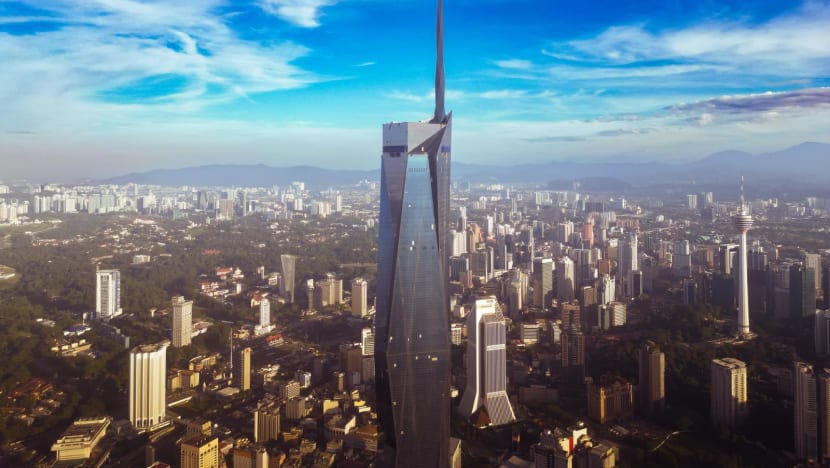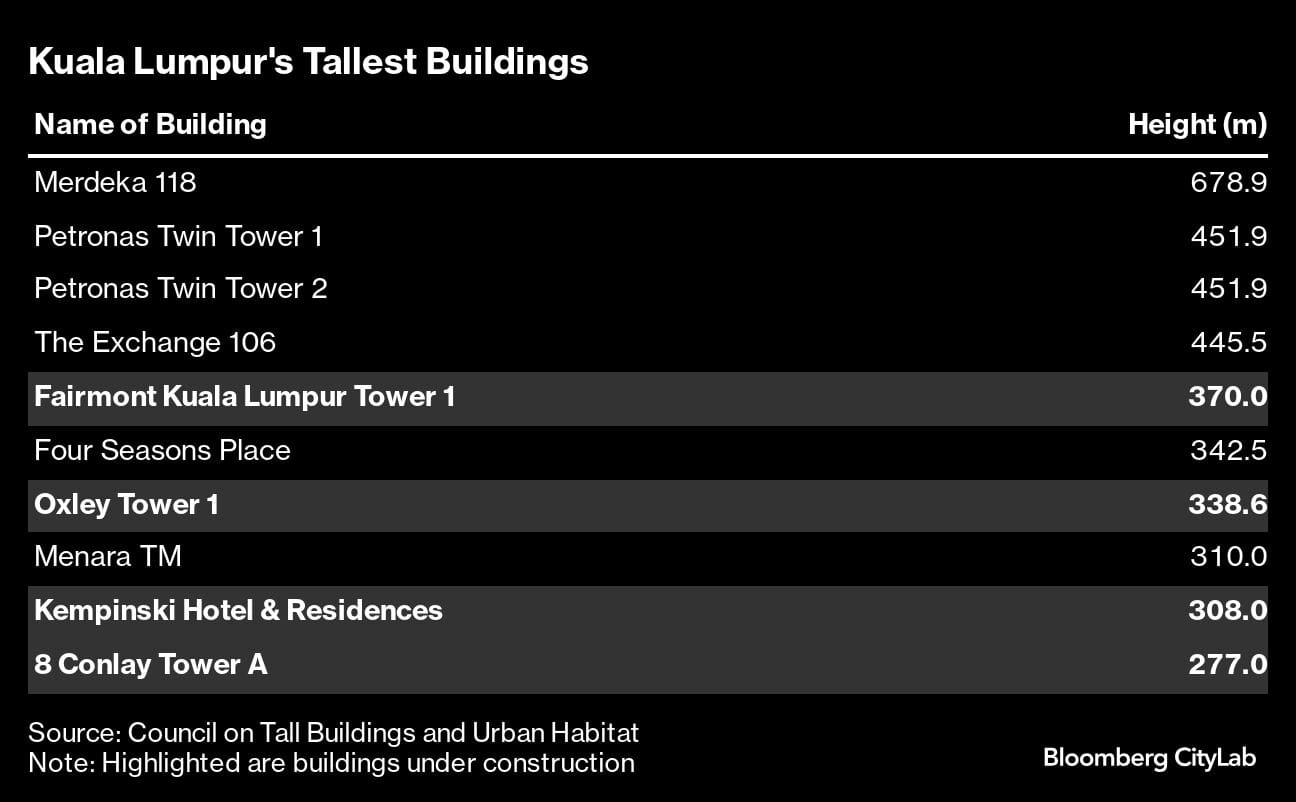World's second-tallest building Merdeka 118 tests Malaysia's appetite for skyscrapers, property market
Building tall landmarks had long been a source of prestige and national pride for Malaysia’s leaders, but the recent addition of another has PM Anwar Ibrahim suggesting there’s already enough.

Kuala Lumpur city view with Merdeka 118 at sunset. (Photo: Istock)

This audio is generated by an AI tool.
A quarter-century after the Petronas Twin Towers became the world’s tallest buildings and reshaped Kuala Lumpur’s skyline, Malaysia’s capital is continuing to add new skyscrapers despite growing doubts over the level of demand for property.
Kuala Lumpur already has more supertall buildings than all but seven cities, and recently it’s added another — the 678.9m Merdeka 118, which will fully open to the public later this year. A long spire helped it edge out the Shanghai Tower to become the second-tallest building in the world after Dubai’s Burj Khalifa.
With a population of about 2 million in a city where many offices and homes sit empty, there are growing questions about the proliferation of skyscrapers in the Malaysian capital. But such construction is likely to continue, driven by a preference by many investors to chase returns in real estate, and developers and political leaders seeking to project national strength through building tall.
“If the money rules, this is what happens,” said Mustapha Kamal Zulkarnain, an architect who focuses on resilient cities. “We’re building as if nobody’s checking on the demand.”

Malaysia’s leader has taken notice. In a speech last month, Prime Minister Anwar Ibrahim urged more focus on affordable housing, as well as shops and small restaurants.
“There are already many skyscrapers,” he said. “If the private sector wants to build them, please do. But the government does not make this a priority anymore.”
The boom started in the 1980s, fuelled by former Prime Minister Mahathir Mohamad's big infrastructure projects meant to both drive rapid economic growth and outshine the West. When the Petronas Twin Towers were completed in 1996 under his watch, barely eclipsing Chicago’s Sears Tower, it was the first time in over a century that the world’s tallest building was not in the US.
Using big projects to portray power “was typical for Mahathir”, said Carmelo Ferlito, chief executive officer of the Center for Market Education, a Kuala Lumpur-based think tank.

Merdeka 118 also holds nationalist symbolism. Its design — a narrow tower consisting of triangular glass planes and a 160-meter spire — is meant to evoke the image of Malaysia’s first prime minister Tunku Abdul Rahman during a 1957 speech where he raised his right arm and shouted “Merdeka”, or independence in Malay, marking the end of British rule.
According to Permodalan Nasional Berhad (PNB), the government-linked investment firm behind Merdeka 118, the building was meant to put the company on the world map and create a new national symbol. When Merdeka 118 was announced during the prime ministership of Najib Razak in 2010, some saw it as a way for the leader to one-up Mahathir.
A lawyer for Najib didn’t respond to a request for comment.
As building boomed, however, urban planners looked at Kuala Lumpur with growing concern. Founded in the 1850s as a mining town, the city had only about 300,000 residents at independence, many of them living in bungalows on individual lots surrounded by rainforests. In recent decades many of these areas were sold to developers who built tall towers. The result: A fragmented city with massive high-rises and malls linked by a sprawling network of highways.

It’s “a breakdown of urban design”, said Mustapha.
Kuala Lumpur’s soaring population fuelled more high-rise construction, but demand for homes, in particular, came from ethnic Chinese Malaysians for whom real estate is a favoured store of wealth, said Cha-Ly Koh, founder of property data company UrbanMetry. Decades of rising prices helped cement that idea, leading some to buy multiple homes. Many now sit empty — one in five homes in Malaysia were unoccupied as of 2020, according to census data.
In recent years, prices have largely plateaued and owners unable to sell their apartments are finding themselves with underwater mortgages. And yet, new buildings keep coming up.
“It’s a mystery even to me,” Ferlito said of the continued construction despite the diminishing returns from real estate.
In the commercial sector — where one-third of office space is empty — there also aren’t enough tenants to fill the supply, said Siva Shanker, CEO of estate agency at property consultancy Rahim & Co. As such, the market mostly consists of companies shuffling between buildings, he added.
In Merdeka 118, PNB will itself occupy a large chunk of the 118 floors. It’s also signed up the country’s biggest lender Malayan Banking Bhd — which counts state-linked funds as some of its largest shareholders — as an anchor tenant. PNB agreed to pay a decade’s worth of maintenance of the bank’s current headquarters, among other costs, as part of the relocation deal.
PNB said it’s looking for tenants for the remaining 30 per cent of its office space. Merdeka 118 will also house a hotel and an observation deck, while its surroundings include a luxury mall. In a statement, PNB said that “Merdeka 118 is geared towards generating a positive impact on the surrounding communities by enhancing liveability, walkability and supporting local economic activity”.
Ferlito says government-linked companies can continue to build in spite of market forces and the property market's oversupply. At least half of Kuala Lumpur's 10 tallest buildings, some of which are still under construction, have some government ties.
And a market crash is unlikely, analysts say, because residential owners prefer holding on rather than selling and taking a loss, while many of the bigger office buildings are owned by companies and funds that can weather a multiyear downturn.
Underpinning much of this is Malaysia's tendency to look to the Middle East as a model, according to Ferlito. Buildings become a way of “showing will to power”, he said. “This mentality of, mine is bigger.”














